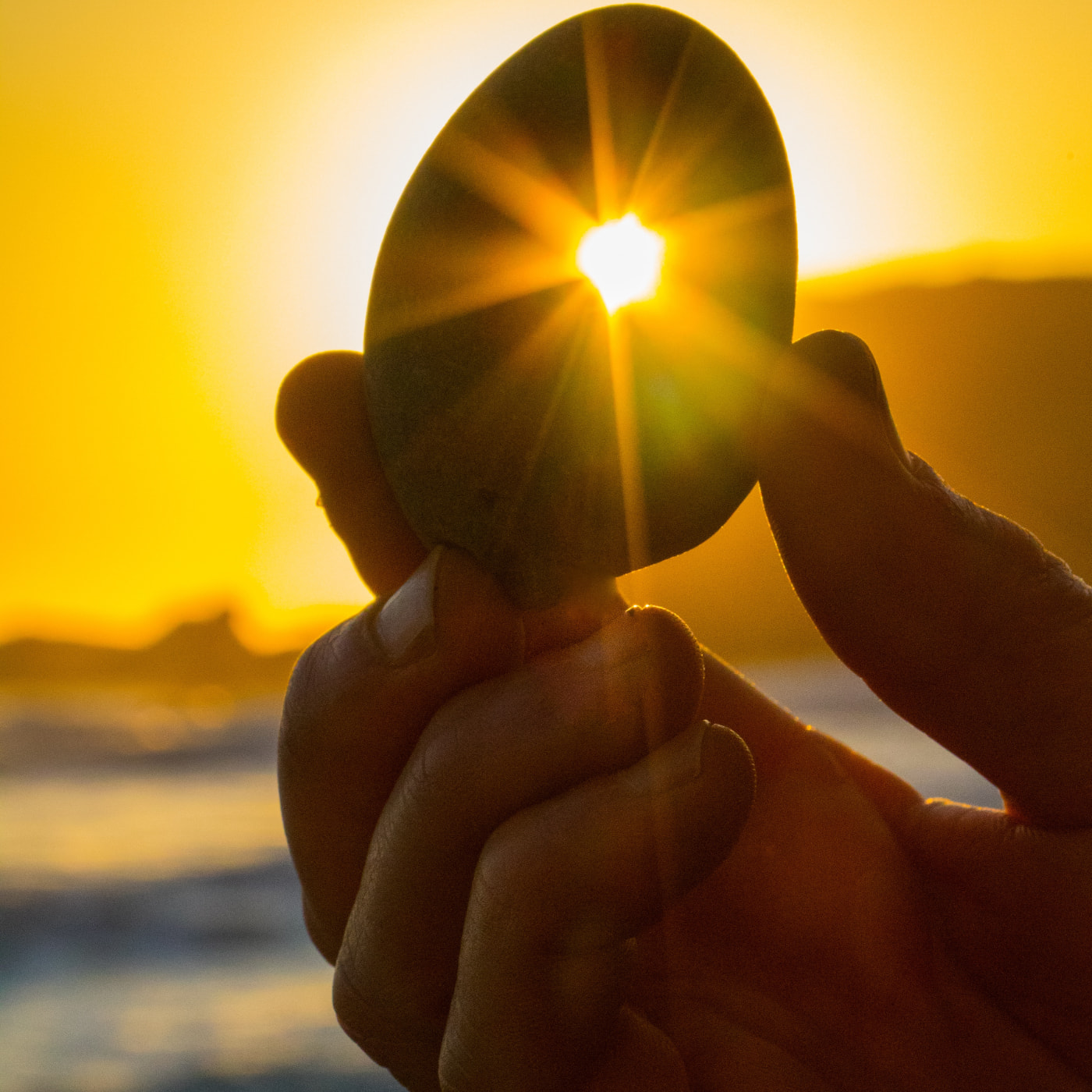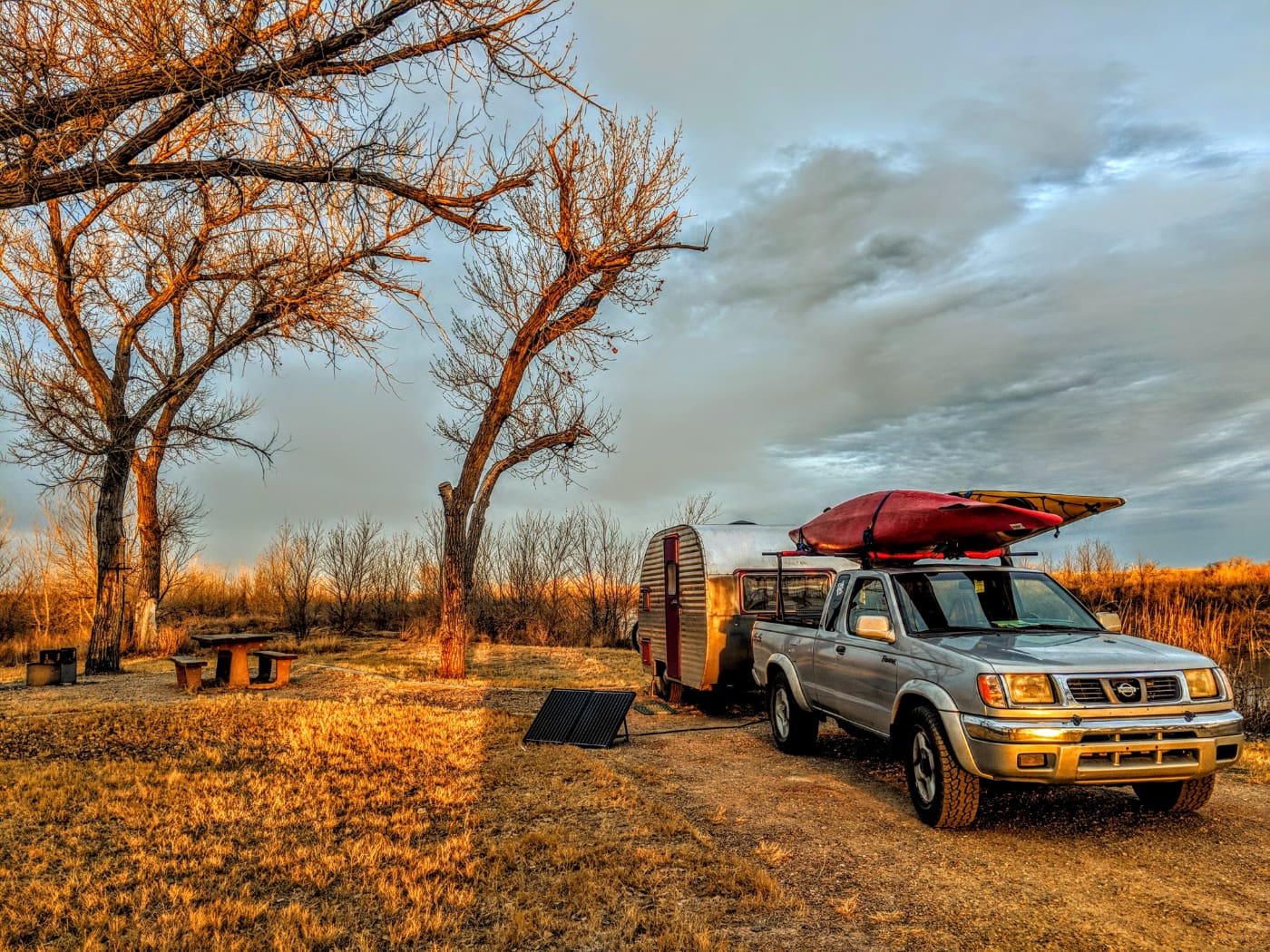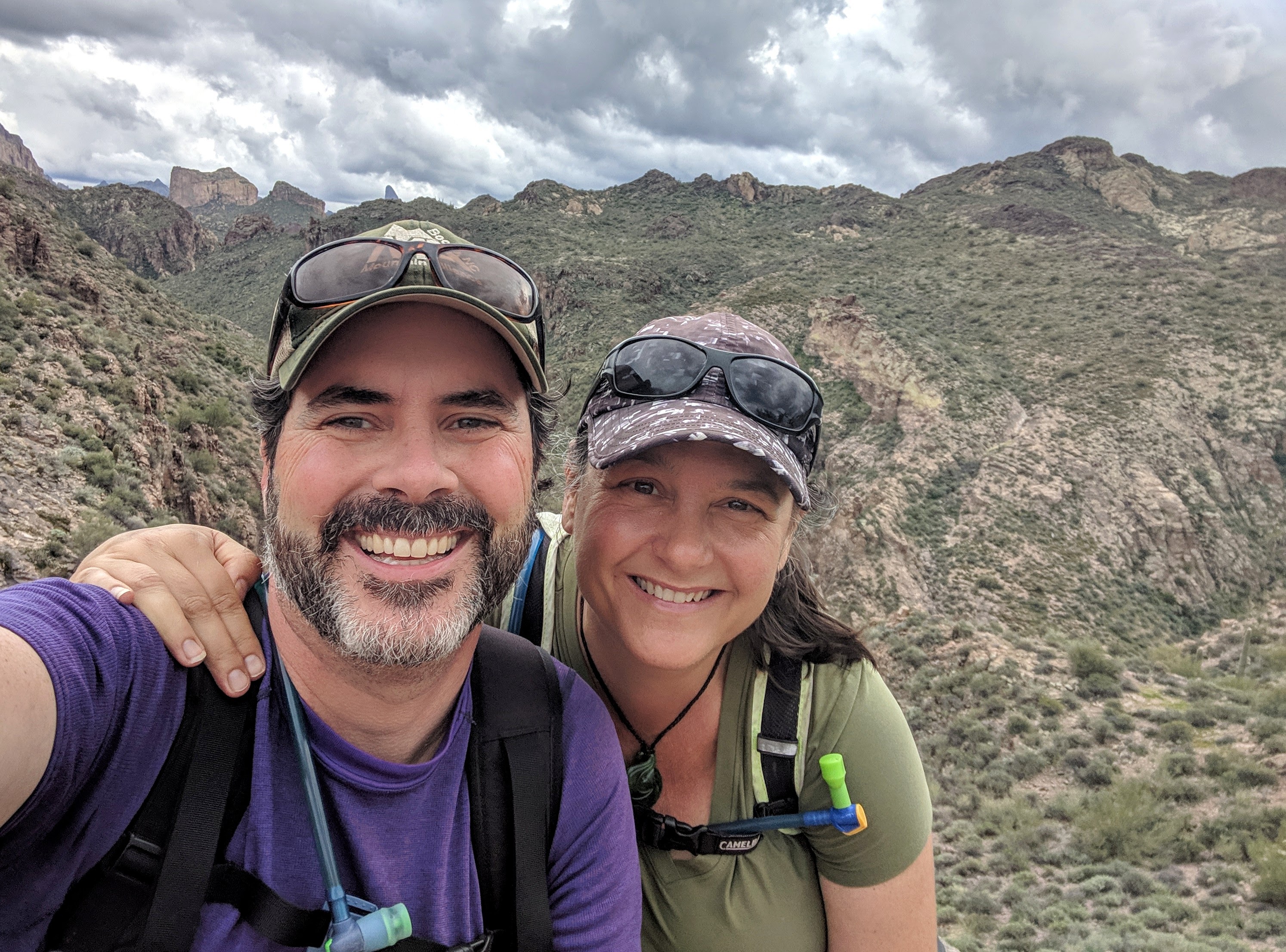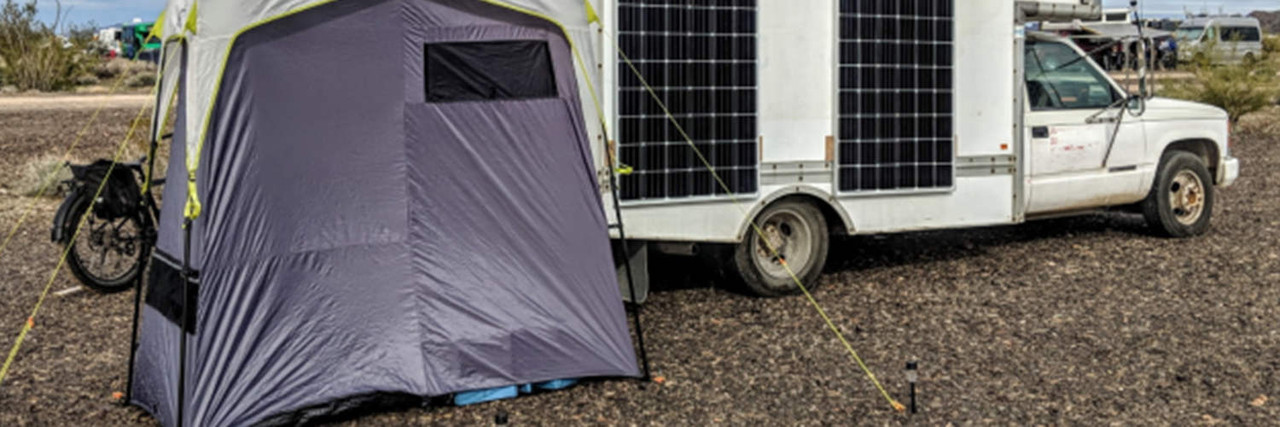How Solar Panels Work: Breaking It Down for Beginners
Why Choose Solar for Mobile Living?
What if you could live in your RV for months at a time and find free campsites all over the nation because you power your life with solar? We did just that during our first year of traveling in our tiny, vintage, trailer, named Hamlet! And, 6.5 years later, we are still on the move – and still discovering new places, opportunities, and friends.
When we began this mobile lifestyle in 2012, our goal was to live simply, inexpensively, and sustainably while traveling across North America; so, going solar fit nicely into our intention. We remodeled a beat-up 1957 canned ham camper, which we found on Ebay for $900, and added a modern solar-powered system to go off-grid as much as possible. We knew very little about the technical aspects of solar power when we started this journey, but with some help from a savvy friend at IONCON of Boone, NC and a couple You Tube videos, we were running our lives on solar power within a couple of days.
Are you ready to begin your solar powered journey?
How Do Solar Panels Work?

Solar power is a simple three step equation: collection + storage = usage. The more you want to use, the more you must collect and store. There are four essential components which make this process safer and more efficient. In Hamlet's simple system, we use one 100-watt Renogy solar panel suitcase (which folds up for easy storage), one charge controller, one deep-cycle 12-volt battery, and one 400-watt inverter. With this we run lights in the evening, our vent fan, and charge our laptops and smartphone. It’s all we really need when we’re out enjoying the natural world.
Solar systems are scalable, so if we ever decide we need more power, we can add batteries and panels. For now, we are very happy with the simplicity of our system and lives. Downsizing our needs has greatly reduced our stress level and our ecological footprint. Less to maintain + less cost = less stress!
Breaking It Down: 4 Basic Components of a Solar Powered System

Collection: Solar Panel
The first component of a solar powered system is…you guessed it...a solar panel! A typical panel is comprised of many solar cells wired together and protected with a covering and there are many different types and styles of panels. The cells work when particles of light (photons) collide with the atoms in the cell knocking off electrons and causing an electrical current to flow. Panels will work anytime they are illuminated even on cloudy days, though the efficiency is greatly reduced. This is important to remember when installing your system, if sun is hitting the panel those wires are going to be hot. Other things that will affect collection of energy is how much shade hits your panel during the day, which direction your panel is facing (south is best!), the angle of the sun at different times of year, your latitude, atmospheric humidity, etc.
Monitoring: Charge Controller
The charge controller is the gate keeper of the whole system as it constantly monitors and adjusts the flow of energy coming from the solar panel to the battery. Overcharging a battery is very dangerous as it can damage the battery and possibly cause a fire. So, a charge controller is an absolutely necessary part of a solar powered system. Just like solar panels, charge controllers come in all different sizes and types. The type of charge controller you need depends on how many watts you want to collect from the sun.
Storage: Battery
The battery stores the energy collected by the panel so that you can run your electrical appliances when the sun isn’t out. Many RV’s come equipped with “house” batteries which can run your home appliances and are usually about the size of car batteries – but their purpose is very different. Car batteries provide a big boost of electricity to start the engine when it is cold. Once the engine is running the battery is charged constantly by the alternator. It is not designed to be discharged or run other DC appliances for very long.
House batteries, usually called “deep cycle” batteries are designed to be depleted and charged (a cycle) many times. The life of a battery can be determined by the number of cycles it is intended. Just as there are many sizes/types of panels and charge controllers, there are many different types of batteries.
Batteries can range in price from $120 to $900 a piece depending on what you choose; there are advantages and disadvantages to each type.
Use: Inverter
The inverter is the final piece of the system. The type of electricity stored in your battery is DC (direct current), and many things in an RV like lights or a vent fan can run on DC. If you want to plug in your laptop, blender or coffee maker, you need to convert it to AC (alternating current) at 110-volt electricity. The inverter simply transforms the electricity stored in the battery into alternating current (AC), which is the type of electricity most of our everyday appliances use to power up and run.
Inverters come in various wattage ratings depending on the types of appliances you want to run in your RV. For instance, if you plan to run a 500-watt refrigerator and a 200-watt coffee maker at the same time, you need an inverter that can handle more than 700 watts (500 + 200).
Now, that we know more about how solar works, it’s time to do some homework! Follow each link above and read up on the different types and sizes of each component. Take some notes about each piece of the system so that it begins to make sense, but don’t get too hung up on the physics, unless of course you want to nerd out a bit. You’ll find that RV solar kits, which bundle some of the components and accessories for you, are also available; but it’s always good to know and understand your options before jumping into a kit. Learn how to assess your overall electrical needs and decide how many panels and batteries you will need to power your life on the road.
If we’ve inspired you to go solar with Renogy, please use our affiliate link and promo code “canlife.” You will get a 10% discount and we will get credit for the sale. It’s win-win! And, as always, contact us directly with any questions. We love to hear from our readers!

Shari Galiardi & David Hutchison have turned their higher education backgrounds, desire for life-long learning, and thirst for adventure travel into writing, photography, video production, and public speaking tours from coast to coast. Known to their friends as simply Shari & Hutch, you can learn more about their full-time, solar powered adventures on their website at freedominacan.com. Or, follow them on Facebook, Instagram, and YouTube as “Freedom in a Can.”











